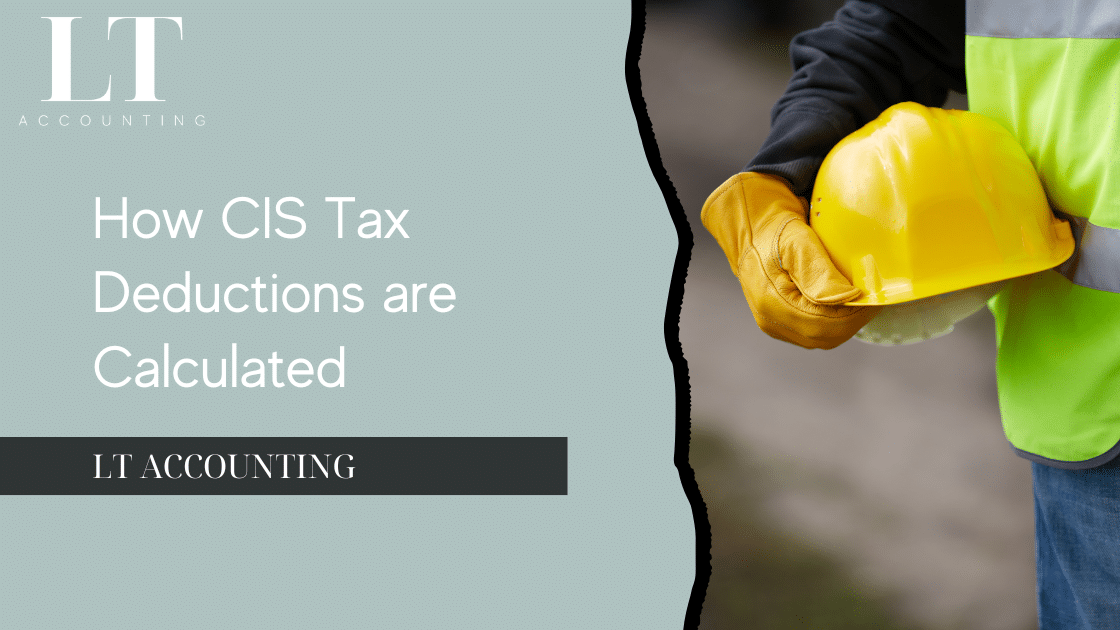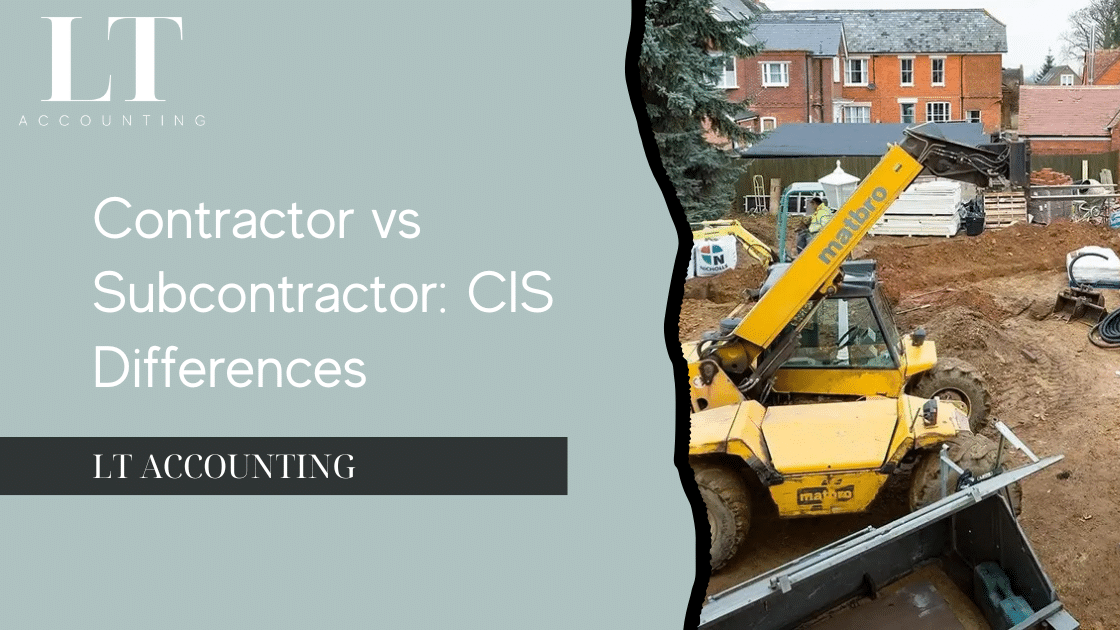The Construction Industry Scheme (CIS) is a tax system established by HMRC to regulate how contractors and subcontractors handle payments in the construction industry. Under CIS, contractors have to manage CIS Tax Deduction Calculation from subcontractor payments and pass it on to HMRC. These deductions serve as advance payments toward the subcontractor’s income tax and National Insurance contributions.
For subcontractors, understanding how these deductions are calculated is crucial to avoid overpaying taxes or underreporting income, which can lead to penalties. For contractors, accurate CIS deductions and reporting ensure compliance and maintain smooth relationships with HMRC. In this article, we’ll break down the CIS deduction calculation process, the factors that influence deduction rates, and how subcontractors can manage these deductions effectively.
What is the Construction Industry Scheme (CIS)?
The Construction Industry Scheme (CIS) was introduced to improve tax compliance in the construction sector by holding contractors accountable for tax deductions on subcontractor payments. CIS targets businesses and individuals who operate as contractors or subcontractors, ensuring that subcontractor tax payments are managed consistently.
Under CIS, contractors are responsible for deducting a portion of each subcontractor’s pay and passing it on to HMRC. These deductions count as advance payments towards the subcontractor’s tax liabilities, so it’s crucial for both parties to maintain accurate records of these deductions. Subcontractors, on the other hand, may be self-employed individuals, limited companies, or partnerships, and they depend on contractors to withhold the correct amount according to their registration status with HMRC.
For clarity:
- Contractors: Pay subcontractors for construction work and must follow CIS rules if their work falls within the CIS scope.
- Subcontractors: Perform construction work for contractors and are subject to CIS deductions.
CIS applies to most construction work, including site preparation, demolition, repairs, decorating, and installations. It’s essential for contractors and subcontractors to understand which activities are covered by CIS to avoid penalties and tax issues.
CIS Registration and Verification
One of the most important aspects of CIS is the verification process, which helps determine the appropriate deduction rate for each subcontractor. Registering with CIS is straightforward for both contractors and subcontractors, but there are specific steps for each party to ensure that HMRC records are correct.
- Subcontractor Registration: Subcontractors must register with HMRC for CIS to benefit from a reduced tax deduction rate of 20%. This registration shows HMRC that they are tax-compliant, avoiding the higher deduction rate of 30% that applies to unregistered subcontractors. Subcontractors can register online or by calling HMRC.
- Verification Process for Contractors: Before making the first payment, contractors are required to verify each subcontractor with HMRC to confirm the deduction rate:
- 20% Deduction: Applies to registered subcontractors.
- 30% Deduction: Applies to subcontractors who are not registered under CIS.
- 0% Deduction (Gross Payment Status): Available to subcontractors with gross payment status, meaning they receive payments in full without deductions. This is only granted to subcontractors who meet HMRC’s requirements for turnover, compliance history, and record-keeping standards.
The verification process ensures that contractors apply the correct rate, which is key to avoiding over-deduction or under-deduction. Failure to verify could lead to incorrect deductions, penalties, and the potential for disputes between contractors and subcontractors.
How CIS Tax Deduction Rates are Determined
CIS tax deduction rates depend on the subcontractor’s status with HMRC:
- 20% for Registered Subcontractors: Subcontractors who register for CIS with HMRC qualify for a 20% deduction rate. This rate is deducted from their earnings and treated as an advance payment toward their annual income tax and National Insurance.
- 30% for Unregistered Subcontractors: If a subcontractor is unregistered, the contractor must deduct 30% of payments. This higher rate encourages subcontractors to register with HMRC, ensuring they are properly accounted for in the tax system.
- 0% for Gross Payment Status: In certain cases, HMRC grants subcontractors gross payment status, which allows them to receive their payments without any deductions. This status is typically reserved for established subcontractors who meet criteria, including an annual turnover above £30,000 and a consistent record of paying taxes on time.
To qualify for gross payment status, a subcontractor must:
- Be tax-compliant, with no recent record of tax defaults or late filings.
- Maintain satisfactory business records.
- Meet the minimum turnover requirement.
If gross payment status is granted, HMRC expects subcontractors to manage their tax obligations independently, as there will be no deductions made by contractors.
Calculating CIS Tax Deductions
For contractors, calculating CIS deductions accurately is key to maintaining compliance with HMRC. The deduction applies only to labour costs, excluding materials, equipment hire, or certain other expenses.
Step-by-Step Process to Calculate CIS Deductions:
- Calculate the Total Payment Due: Start by identifying the total payment owed to the subcontractor, including both labour and materials.
- Deduct Materials and Other Allowable Costs: HMRC allows certain costs to be excluded from CIS deductions, including:
- Materials: Costs of materials directly purchased by the subcontractor and used for the work.
- Equipment or Plant Hire: Charges for hiring necessary machinery or tools.
- VAT on Invoices: CIS deductions are calculated on the net payment, excluding VAT.
- Apply the Correct Deduction Rate: Once allowable costs are excluded, apply the CIS tax deduction rate (20% or 30%) to the remaining balance:
- Example: If a subcontractor’s total invoice is £1,000, with £200 allocated to materials, the calculation would be based on £800 (after deducting materials).
- Registered Subcontractor (20%): Deduction of £160, resulting in a net payment of £640.
- Unregistered Subcontractor (30%): Deduction of £240, resulting in a net payment of £560.
- Record and Report: The contractor must keep accurate records of all deductions, specifying the amounts deducted and reported to HMRC.
Reporting and Paying CIS Deductions to HMRC
Contractors are required to submit monthly CIS returns to HMRC detailing all payments made to subcontractors, along with any deductions made. The return should include:
- Details of Subcontractors: Name, Unique Taxpayer Reference (UTR), and verification number if applicable.
- Payment Breakdown: Total amount, materials costs, and CIS deduction amount.
- Deduction Rate Applied: Verification confirmation showing 20%, 30%, or gross payment status.
Returns are due by the 19th of each month following the month in which payments were made. For example, returns for January payments must be submitted by February 19th. Late submissions or payments may incur penalties, so it’s critical for contractors to remain diligent with reporting and payment deadlines.
How Subcontractors Can Claim CIS Refunds or Set Off Deductions
Subcontractors who work under the Construction Industry Scheme (CIS) often have significant amounts of tax deducted at source by contractors. While this helps ensure tax compliance, it can also mean that subcontractors end up with excess deductions, especially if their actual tax liabilities are lower than the amounts withheld. Fortunately, subcontractors can claim back these deductions through a tax refund or set them off against other tax obligations.
Self-Assessment Tax Return for Sole Traders and Partnerships
For self-employed subcontractors or partnerships, reclaiming CIS deductions starts with the annual Self-Assessment tax return. Here’s how it works:
- Complete Your Tax Return: When filing a Self-Assessment return, subcontractors must report all earnings from CIS work. The total amount of tax already deducted by contractors should be declared, as it counts as a credit against their overall tax liability.
- Offset CIS Deductions Against Tax Liabilities: HMRC compares the total deductions reported by the subcontractor with their actual tax liability based on their taxable income. If CIS deductions exceed the calculated tax liability, the subcontractor is eligible for a refund of the excess amount.
- Receive the Refund or Offset: If there’s an overpayment, HMRC typically issues a refund within a few weeks of processing the Self-Assessment. In cases where subcontractors owe additional taxes beyond the CIS deductions, the deductions serve to reduce the balance due.
CIS Tax Refunds for Limited Companies
For subcontractors operating as limited companies, CIS deductions can be offset directly against the company’s Corporation Tax bill. The process differs slightly from that of sole traders:
- Declare CIS Deductions on the Corporation Tax Return: Limited companies are required to complete a Corporation Tax return (CT600), reporting all CIS deductions that have been made by contractors.
- Offset CIS Deductions Against Corporation Tax: HMRC allows these companies to use CIS deductions as credits toward their Corporation Tax liability. For instance, if a limited company owes £10,000 in Corporation Tax but has £3,000 in CIS deductions, it only needs to pay the £7,000 balance after the deductions.
- Request a Refund if Corporation Tax is Overpaid: If the company’s CIS deductions exceed the Corporation Tax owed, it can request a refund from HMRC. In some cases, CIS deductions can also be used to offset PAYE or National Insurance liabilities, adding further flexibility for limited company subcontractors.
Common CIS Tax Deduction Challenges and How LT Accounting Can Help
While CIS offers a streamlined approach to tax compliance in construction, it also comes with challenges, particularly around calculating deductions accurately and managing cash flow when CIS payments are withheld. Here are some common CIS-related issues subcontractors face and how LT Accounting can assist in overcoming them.
1. Misclassification of Labour and Materials
One frequent issue contractors encounter is the misclassification of expenses. Materials, plant hire, and some other costs should be excluded from the CIS deduction calculation, but misinterpreting or misreporting these can lead to over-deductions or under-deductions. LT Accounting can help contractors establish clear guidelines on allowable expenses and ensure these classifications are applied correctly.
2. Incorrect Deduction Rates
Using incorrect deduction rates can lead to significant tax complications. For example, applying the 20% rate to an unregistered subcontractor (who should have a 30% deduction) results in underpayment to HMRC, which may incur penalties. LT Accounting can manage subcontractor verification and ensure that correct rates are applied consistently, keeping contractors compliant with HMRC requirements.
3. Managing CIS Cash Flow Impacts
For subcontractors, CIS deductions can have a noticeable impact on cash flow, especially if the subcontractor depends on income to cover immediate business expenses. For those operating as limited companies, LT Accounting can help establish an effective strategy for offsetting CIS deductions against tax liabilities, easing cash flow constraints.
4. Complex CIS Tax Refund Claims
Obtaining CIS refunds can sometimes be more challenging than anticipated, especially for those with multiple contractors and varying deductions throughout the year. By working with LT Accounting, subcontractors can streamline this process, ensuring all necessary documents are in order and that refund claims are submitted accurately. LT Accounting also helps limited companies navigate offset options, ensuring that CIS deductions are applied in the most advantageous way.
5. Avoiding Penalties Due to Non-Compliance
Non-compliance in CIS – such as missed deadlines, inaccurate reporting, or under-deductions – can lead to HMRC penalties, which may quickly accumulate and impact a business’s financial stability. LT Accounting’s CIS compliance services help contractors and subcontractors stay on track with HMRC’s filing and payment deadlines, providing ongoing support to prevent costly errors and penalties.
Conclusion
Understanding how CIS tax deductions are calculated is essential for both contractors and subcontractors in the construction industry. By mastering the principles of CIS registration, accurate deduction calculations, and the refund process, businesses can save time, avoid penalties, and improve cash flow management. However, navigating CIS compliance alone can be complex, especially with changing regulations and evolving tax requirements.
At LT Accounting, we specialise in supporting contractors and subcontractors with comprehensive CIS services, from managing monthly deductions to handling year-end returns and claiming refunds. Working with a knowledgeable accountancy partner ensures that you stay compliant, maximise refunds, and optimise your tax strategy within the CIS framework.
For personalised advice on CIS tax deductions or to learn more about our services, contact LT Accounting today. With expert guidance and hands-on support, you can focus on growing your business while we handle the complexities of CIS compliance for you.






